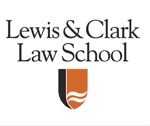Animal Law Review
First Page
125
Abstract
The U.S. Fish and Wildlife Service (the Service) is unable to adequately address Endangered Species Act (ESA) petitions because marijuana’s Schedule I status creates a regulatory vacuum. Marijuana growers use pesticides, many of which are lethal at certain concentrations. Typically, these pesticides are highly regulated by the Environmental Protection Agency (EPA). Farmers may only use pesticides specifically prescribed for use on the plant or crop. EPA has been unable to research or register pesticides for use on marijuana plants, and as a result, growers use pesticides at abnormally high concentrations. Wildlife in northern California and Oregon are directly harmed as a product of the regulatory vacuum. Endangered species like the Humboldt marten and the Pacific fisher have high rates of rodenticide exposure, which marijuana growers use on their plants and leads to deadly concentrations of bioaccumulated rodenticide.
Environmental groups have filed numerous petitions to protect these species under the ESA. But the Service cannot adequately address the very real threat of rodenticide because of the regulatory vacuum. Congress must remove marijuana from Schedule I. The integrity of the ESA relies on sound judgment from the Service, but the current regulatory environment corrupts the Service’s ability to protect endangered species. The regulatory vacuum is deadly for the Humboldt marten and the Pacific fisher.
This Article first provides a discussion of the ESA’s petition process for context. Next, it outlines how the absence of federal regulation causes wildlife deaths in Oregon and California. The Article then examines why the Service is unable to effectuate its duties to protect endangered species. Lastly, the Article posits that coherent federal regulation will save threatened species in the future.
Recommended Citation
Jeffrey Bausch Jr.,
The Regulatory Vacuum: How Marijuana's Schedule I Status Imperils Endangered Species in the Emerald Triangle,
Animal L. Rev.
125
(2020).
Available at:
https://lawcommons.lclark.edu/alr/vol26/iss1/5

